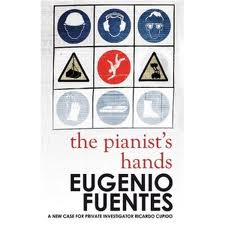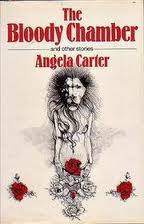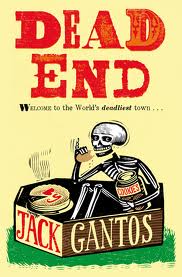Author Francine Prose, in her book Reading like a Writer, says she learnt to write by reading. “I read for pleasure, first, but also more analytically, conscious of style, of diction, of how sentences were formed and information was conveyed, how the writer was structuring a plot creating characters, employing detail and dialogue.”
There are plenty of books that can teach you ‘how’ to read, critically, analytically, and these are certainly useful tools to have. Equally a good book club and do the same, with the added bonus of being a social outlet too. And don’t forget to consult with your local librarian – a good librarian is a friend to have on your side!
Prose tells us to slow down our reading, that each word is like a composers musical annotation, that “…every word that appears… reflects the final result of countless large and small deliberations.”
Good advice – I’m always rushing my reading, trying to fit in so many words before the next task, skimming the ages rather than closely reading them.
Prose goes on to say, “I often thing of learning to write by reading as something like the way I first began to read. I had a few picture books I’d memorized and pretended I could read, a sort of part trick that I did repeatedly for my parents who were also pretending-in their case to be amused. I never knew exactly when I crossed the line from pretending to actually being able, but that was how it happened.”
Prose F., Reading Like a Writer: A Guide for People Who Love Books and Those Who Want to Write Them, Harper Perennial, New York, 2007.
So I’ve been reading and continuing my study of first pages. Here is the latest in my first page analysis:
Fuenes E., The Pianist’s Hands, Arcadia Books Ltd, London, 2008.
 I am drawn into this story through the motif of hands. It begins with a lively discussion of pianist’s hands and moves onto the hands of the narrator (also a pianist). In this way, the broad focus becomes more personal. I know this is a crime fiction – not usually my thing, but I am trying to expand my reading – so I am already looking for clues. I can feel a dormant violence in this first page, with reference to an alertness beneath relaxed hands and images of blood and strangulation: “…stringed with veins that vibrate as the blood courses through them.” “…growing rings which strangle their bases…” Finally culminating in the point of intrigue: “My hands are pianist’s hands too. And yet I’ve scattered small corpses all over the city with them.” This line hooks the reader in…what does it mean, is the narrator also a murderer, will this give away whatever crime is to take place?
I am drawn into this story through the motif of hands. It begins with a lively discussion of pianist’s hands and moves onto the hands of the narrator (also a pianist). In this way, the broad focus becomes more personal. I know this is a crime fiction – not usually my thing, but I am trying to expand my reading – so I am already looking for clues. I can feel a dormant violence in this first page, with reference to an alertness beneath relaxed hands and images of blood and strangulation: “…stringed with veins that vibrate as the blood courses through them.” “…growing rings which strangle their bases…” Finally culminating in the point of intrigue: “My hands are pianist’s hands too. And yet I’ve scattered small corpses all over the city with them.” This line hooks the reader in…what does it mean, is the narrator also a murderer, will this give away whatever crime is to take place?
So in this book, it is a broad focus that becomes personal, the building of tensions with covert violent images and the point of intrigue.
Carter A., The Bloody Chamber, Vintage, London, 2006.
 I know this is not contemporary fiction, and I have read it before. It is a collection of short stories by Angela Carter, and if you haven’t read this book, I thoroughly recommend it. First published in 1979, Carter uses the dormant sexual content of traditional fairy tales and creates new stories – quite controversial in its day and still relevant today. Here she writes lusciously, every sentence seems to ripple with sexual tension, every phrase is sensual; as indicated by the first line of the title story: “I remember how, that night, I lay awake in the wagon-lit in a tender, delicious ecstasy of excitement, my burning cheek pressed against the impeccable linen of the pillow and the pounding of my heart mimicking that of the great pistons ceaselessly thrusting the train that bore me through the night.” She writes of women’s assertiveness and transformation, making clear statements “…that passivity it not an intrinsically virtuous state, even – in fact, especially not – in women.” Simpson, H. in the Introduction to the stories, pp. xi.
I know this is not contemporary fiction, and I have read it before. It is a collection of short stories by Angela Carter, and if you haven’t read this book, I thoroughly recommend it. First published in 1979, Carter uses the dormant sexual content of traditional fairy tales and creates new stories – quite controversial in its day and still relevant today. Here she writes lusciously, every sentence seems to ripple with sexual tension, every phrase is sensual; as indicated by the first line of the title story: “I remember how, that night, I lay awake in the wagon-lit in a tender, delicious ecstasy of excitement, my burning cheek pressed against the impeccable linen of the pillow and the pounding of my heart mimicking that of the great pistons ceaselessly thrusting the train that bore me through the night.” She writes of women’s assertiveness and transformation, making clear statements “…that passivity it not an intrinsically virtuous state, even – in fact, especially not – in women.” Simpson, H. in the Introduction to the stories, pp. xi.
I love her use of language and symbolism, I also like the taboo nature of some of the content – she spoke of things that were not voiced in a way that empowered women – well, at least that’s how I felt reading it for the first time as a teenager!
Gantos J., Dead End in Norvelt, Random House Children’s Pubishers, London, 2012.
 The first page of this novel is quite descriptive; it sets the scene of a boy entertaining himself on his summer vacation at home. There is a paragraph explaining the Japanese army souvenirs his father came home from war with – and if you like this kind of thing, I can see how it would hook you in…but I am not hooked. The book starts off slowly, some conversation between son and mother, and the reader is given some background to life in the town of Norvelt – which, like these first pages, is quite slow…perhaps this is the author’s intent, and very cleverly done, it just doesn’t engage me. The most engaging incident comes several pages in, when the protagonist accidentally shoots the old Japanese sniper rifle and thinks he may have shot his neighbor…a pity this could not be on the first page. I realise I have read beyond he first page of this book, but it was a Washington Post Best Children’s Book of 2011, so I was looking for some gold, but I don’t think I will continue with this book.
The first page of this novel is quite descriptive; it sets the scene of a boy entertaining himself on his summer vacation at home. There is a paragraph explaining the Japanese army souvenirs his father came home from war with – and if you like this kind of thing, I can see how it would hook you in…but I am not hooked. The book starts off slowly, some conversation between son and mother, and the reader is given some background to life in the town of Norvelt – which, like these first pages, is quite slow…perhaps this is the author’s intent, and very cleverly done, it just doesn’t engage me. The most engaging incident comes several pages in, when the protagonist accidentally shoots the old Japanese sniper rifle and thinks he may have shot his neighbor…a pity this could not be on the first page. I realise I have read beyond he first page of this book, but it was a Washington Post Best Children’s Book of 2011, so I was looking for some gold, but I don’t think I will continue with this book.
Ashley M. (Ed.), The Mammoth Book of Historical Crime Fiction, Constable & Robinson Ltd, London, 2011.
 This is an anthology of novellas. I will focus on the first page of the first novella, since this will determine if I will attempt to read any of the other novellas. The first story: Holt T., ‘Archimedes and the Scientific Method’, is interesting because it has a kind of Steampunk feel to it, partly because of the conversational tone I have read in several other Steampunk novels, and partly because it speaks of building superweapons and unbeatable invaders – I expect them to go on and build some kind of steam powered weapon and save the world…but this is set in the times of Archimedes, which predates steam by miles…and so, I am intrigued by the tone of this novella and how the author has given this era long past a modern feel. I will need to read on to discover the rest of the story and assess the success or otherwise of this engaging tone.
This is an anthology of novellas. I will focus on the first page of the first novella, since this will determine if I will attempt to read any of the other novellas. The first story: Holt T., ‘Archimedes and the Scientific Method’, is interesting because it has a kind of Steampunk feel to it, partly because of the conversational tone I have read in several other Steampunk novels, and partly because it speaks of building superweapons and unbeatable invaders – I expect them to go on and build some kind of steam powered weapon and save the world…but this is set in the times of Archimedes, which predates steam by miles…and so, I am intrigued by the tone of this novella and how the author has given this era long past a modern feel. I will need to read on to discover the rest of the story and assess the success or otherwise of this engaging tone.
By the way, Steampunk, in case you were wondering, is a “subgenre of science fiction and fantasy that includes social or technological aspects of the 19th century (the steam) usually with some deconstruction of, reimagining of, or rebellion against parts of it (the punk).” (Steampunk.com). If you’re looking for a good read in this genre, I’m sure you will find lots in your bookstore or library, but Michael Pryor, an Australian author, is a favourite of mine.
What is it that draws me in to these four books? 1) a broad focus that becomes personal, 2) the building of tensions with covert violent images and the point of intrigue, 3) the language: almost poetic, 4) symbolism, 5) a writing pace that matches the action, 6) the tone.



